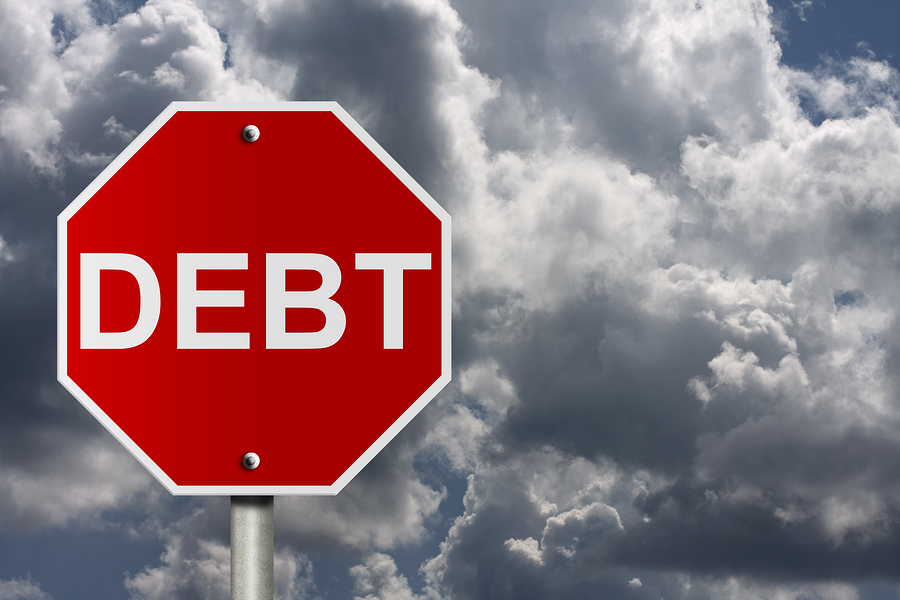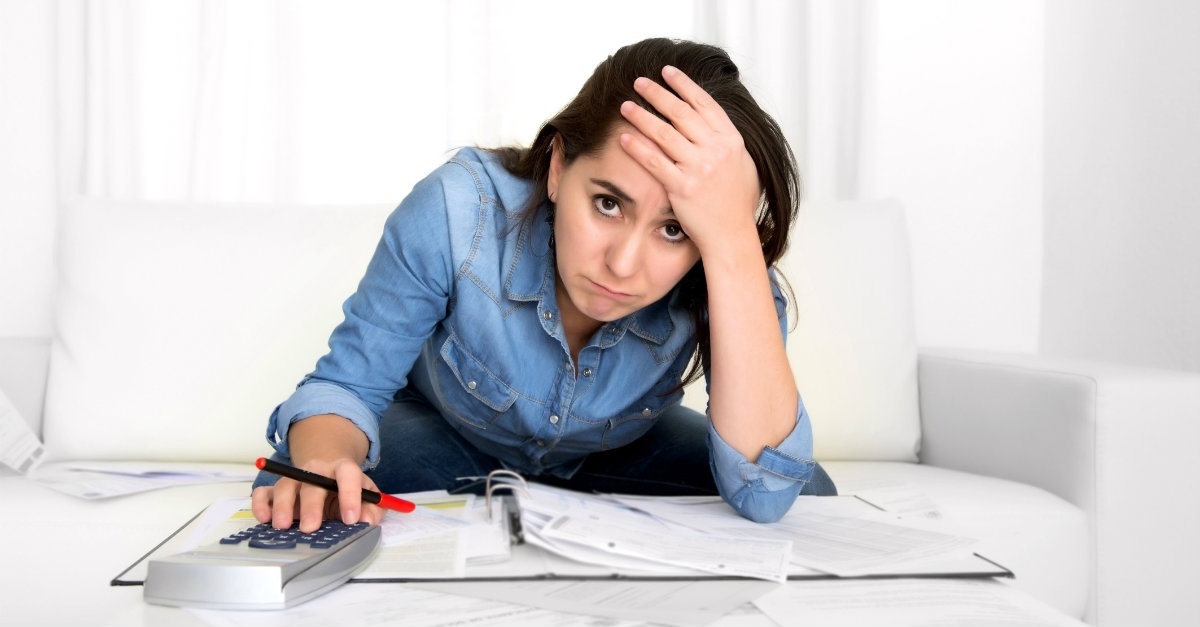If you want to pay off your debt soon, you have to know these 6 numbers
There are many paths that make you fall into debt and there are many ways to help you quickly get rid of that misery.
While some people choose to apply "debt snowball" strategy - a repayment method proposed by economist Dave Ramsey with the idea that when there are many debts (interest is nearly equal), pay the least debt, then the second debt . or the "debt avalanche" method means paying the most profitable debt first, others choose to convert old high-interest credit cards to credit cards new with 0% interest rate for a certain period of time and the new card issuer will be responsible for the balance transfer, selling all assets to increase the amount of cash that can be used to pay the debt, Find additional jobs or combine all of these methods.
Each method has certain benefits if you are serious about repaying debt and are willing to follow the plan. Obviously, the earlier you start, the faster you will get out of debt. On the contrary, the longer the interest rate is, the higher the amount and the larger the amount you pay.
However, where to start? While wanting to escape the burden of debt requires a change of mindset over other things, there are also a number of numbers that you need to know before starting this "difficult journey". No matter which repayment strategy you choose, they are still the first things that need to be clarified.

Knowledge is power. When you understand your situation, both in nature and impact factors will be easier to set up a realistic and realistic repayment plan.
Suppose you have a table of 6 columns and below are 6 data to be filled corresponding to each column.
1. Total actual debt (column 1)
Facing the actual amount to pay is probably the "most painful" moment that anyone who is falling into debt is perceived.
When bank loans or credit card debt, you can easily focus on accounts payable and individual monthly transactions. However, just paying attention to each debt without grasping the amount of money to pay may make you not realize how bad your current situation is.
To get rid of the anti-substance debt, you need to face it. Start collecting bills, then, list all accounts payable and calculate to figure out the final total debt, including credit card debt, car loan debt, tuition debt, and debt rent a house, rent appliances, bank debt, personal debt or any other debt.
2. Interest rate of each debt (column 2)
After you know the total amount of debt you need to pay, you will know which debts you can pay as soon as possible. The best way to classify them is based on real interest rates. If you don't understand the annual interest rate or APR (annual average interest rate) that you need to pay for each loan or credit card, you need to look at the monthly report, check the online account management page. online or call creditors / credit card issuers for details.
If some debts have high interest rates (APR> 10%), you can prioritize paying them first. This is the main strategy of the "Debt Avalanche" repayment method mentioned above - these will require you to spend more money to pay your creditors monthly. By cutting down on the amount of money raised for the first highest interest rates, you will reduce the amount of money you need to spend the following months and feel less pressured than before.

However, some people choose a different approach. Instead of trying to pay the first high-interest loans, they adopted the "Debt Snowball" strategy - that is, focusing on lower or lower interest rates. However, whatever method is used, it is important to know the interest rate of each loan. As a result, you will know which strategy is right for you and which payables should be prioritized first.
3. Monthly payable of each loan (column 3)
After the above two figures, the next number that you need to pay attention to is how much money each month should be spent on each debt. This is the basis for you to calculate the total amount to be paid monthly.
4. Minimum monthly living expenses (column 4)
To get rid of debt, you need to change your habits. For many people, this is probably a thrifty diet, not spending extra money on the budget or building a lifestyle that suits your financial situation. The important thing here is that you should not do anything that makes your debt bigger than before.
To start, consider the total budget for minimum spending - including only the total costs and bills you need to pay each month. In general, this strategy requires that you do not generate any additional shopping - no entertainment, no travel, no meeting . By living with such a limited amount of money, you have It is possible to temporarily have more free cash to pay other debts.
Obviously, once you pay off your debt, you can start expanding your budget to spend on what you like. However, everything needs to be carefully planned to avoid becoming a "debtor" again.
If you're still wondering if you're allowed to spend only on a limited budget, remember that the past consumption habits have caused you to fall into the current situation. So, if you want to get out of debt, first change yourself.
5. The amount you bring home every month (column 5)
Getting out of debt is not something super. However, if you really want to do this, you also need to know a little bit about finance.

In fact, the amount of money you use to pay the debt is taken from the total amount of money you bring home (after deduction of taxes, insurance, payment to welfare fund, other social contributions . .). If you have more than one income each month, if you do not know this data, you will only know them until a tax report is sent at the end of each financial year.
Once you have a real monthly income, you will have a better sense of your ability to pay your debts and how much money you will have to repay your debts after subtracting the necessary expenses.
6. Available income for debt repayment (column 6)
When comparing all figures: total debt, interest rate, minimum monthly living expenses and monthly income, you will have a clearer view of the amount each month to pay.
When living with the minimum amount just to cover the necessary expenses, by default, your surplus will increase. This "excess amount" is called disposable income and this is the starting point of the repayment plan. You can gradually allocate this amount to pay until you pay off your debt. However, the strategy is only possible when you spend all that "excess" on getting rid of debt, not wasting on other things.
In fact, the formula for debt repayment is simple: income - cost = savings . To get rid of debt, you must increase your income or reduce your spending. Although debt seems to make us feel very heavy, the real solution to the problem is not complicated.
You should read it
- 11 bad habits that prevent you from getting out of debt
- Financial support corner: China currently has an application to help detect when debtors are near
- 6 tips to help you get out of debt
- 3 debts absolutely should not be caught in middle age: Worth considering!
- Excel functions calculate the debt age and the average balance
- How to spend by successful people before the age of 30
- Financial management method '6 jars' JARS
- 7 personal financial management tips to know before age 30
May be interested
- 7 signs that you still haven't earned enough money to spend
 the signs are not wrong about how you are in serious lack of money and must quickly find ways to improve your income if you do not want to fall into debt.
the signs are not wrong about how you are in serious lack of money and must quickly find ways to improve your income if you do not want to fall into debt. - Draw the guy wearing a cowboy hat with numbers from 1 - 10 exciting poles
 a short video with the title of a picture created from 10 numbers was posted on the photo sharing platform gfycat recorded the process of drawing the guy wearing a cowboy hat with numbers from 1 to 10 in just 15s making the people live enjoy it.
a short video with the title of a picture created from 10 numbers was posted on the photo sharing platform gfycat recorded the process of drawing the guy wearing a cowboy hat with numbers from 1 to 10 in just 15s making the people live enjoy it. - Official information about the number of SIM 11 transfers is about 10 numbers of carriers
 the department of telecommunications - ministry of information and communications has recently issued an official letter on the process of converting from 11 numbers to 10 numbers (the time and new subscriber numbers for each operator) will officially begin. from september 19 here.
the department of telecommunications - ministry of information and communications has recently issued an official letter on the process of converting from 11 numbers to 10 numbers (the time and new subscriber numbers for each operator) will officially begin. from september 19 here. - How to create interactive charts and graphs on your Mac using Numbers
 charts and graphs are great tools for displaying data. they are easy to read, understand and provide a clear picture of the information. numbers for mac provides a feature for creating interactive charts and graphs. here is how to use it.
charts and graphs are great tools for displaying data. they are easy to read, understand and provide a clear picture of the information. numbers for mac provides a feature for creating interactive charts and graphs. here is how to use it. - Instructions to change phone numbers associated with home banking
 currently, some banks have sent notices and support methods for you to update your phone number at home such as message confirmation, conversion via website system, applications, ...
currently, some banks have sent notices and support methods for you to update your phone number at home such as message confirmation, conversion via website system, applications, ... - Zalo, Viber will automatically convert the subscription number from 11 numbers to 10 numbers
 users of zalo and viber will be supported to continue using the service completely automatically when the time of sim 11 to 10 numbers is implemented starting from 00:00 on september 15, 2018 instead of having to be updated again. phone number manually.
users of zalo and viber will be supported to continue using the service completely automatically when the time of sim 11 to 10 numbers is implemented starting from 00:00 on september 15, 2018 instead of having to be updated again. phone number manually. - How to transfer subscribers 11 numbers to 10 numbers in Android phone book
 if manually converting all old phone numbers to new ones, it will take a lot of time and effort. moreover, the time to transfer 11 numbers to 10 numbers is not far away, expected september 15th. so, network administrator will guide you how to transfer 11-digit subscriber to 10 numbers in android phone book in a simple and fast way.
if manually converting all old phone numbers to new ones, it will take a lot of time and effort. moreover, the time to transfer 11 numbers to 10 numbers is not far away, expected september 15th. so, network administrator will guide you how to transfer 11-digit subscriber to 10 numbers in android phone book in a simple and fast way. - How to transfer 11 numbers to 10 numbers on black and white phones
 if you have to update, save each contact one time, it will take a lot of time and effort, so is there a way to update the contacts on your black-and-white phone faster?
if you have to update, save each contact one time, it will take a lot of time and effort, so is there a way to update the contacts on your black-and-white phone faster? - How to convert negative numbers to positive numbers Excel
 to convert negative numbers to positive numbers and vice versa on excel, you only need to perform a very simple operation.
to convert negative numbers to positive numbers and vice versa on excel, you only need to perform a very simple operation. - Revealing the Power of Repeating Numbers in Numerology
 the world of numerology is vast and complex, and repeating number sequences are rich in symbolic meaning. so if you often encounter repeating numbers, you should learn about their meanings.
the world of numerology is vast and complex, and repeating number sequences are rich in symbolic meaning. so if you often encounter repeating numbers, you should learn about their meanings.










 Domino effects and simple ways to build good habits
Domino effects and simple ways to build good habits 80/20 Principle and know-how to create a happy life
80/20 Principle and know-how to create a happy life How does Uber work? - Decoding Uber
How does Uber work? - Decoding Uber 7 ways to help businesses make money from Pokemon Go
7 ways to help businesses make money from Pokemon Go If you don't believe that weaknesses can become strong points, read this article
If you don't believe that weaknesses can become strong points, read this article Why should you take 10 minutes to meditate every day?
Why should you take 10 minutes to meditate every day?